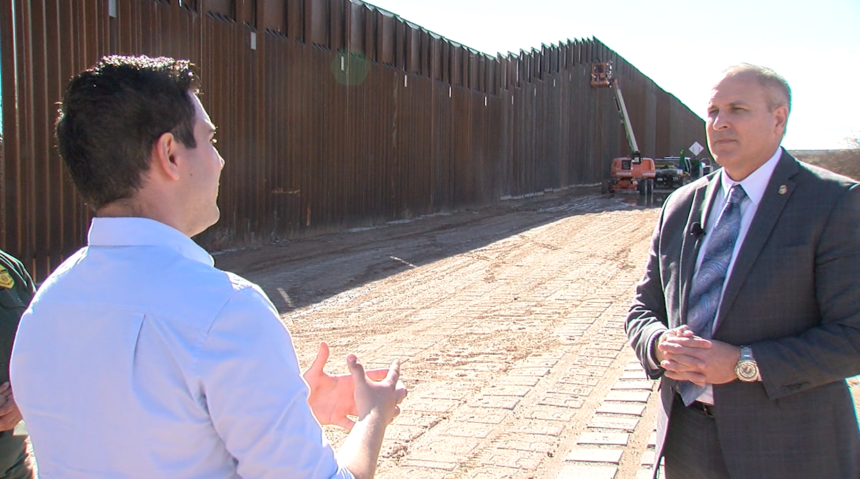‘This isn’t our first rodeo’: CBP chief outlines coronavirus preps along the border to ABC-7

SANTA TERESA, New Mexico (KVIA) -- Acting U.S. Customs and Border Protection Commissioner Mark Morgan is confident about his agency's ability to deal with the coronavirus outbreak.
“We have pandemic plans. This isn’t the first rodeo for CBP," Morgan said. "H1N1, Ebola — and look, we’ve had issues with Tuberculosis. For CBP, this isn’t anything new. They deal with infectious diseases every single day.”
Morgan got a tour of the new border fencing that's being built west of Santa Teresa this week and ABC-7 spoke exclusively to Morgan about a variety of border issues.
Morgan echoed President Trump's mantra that walls work.
“Actually seeing it, touching it, standing next to it -- It brings a new contex," Morgan said. "It’s this president and this administration that has provided CBP with that network of tools.”
The Trump Administration is currently constructing 65 miles of fencing in New Mexico. Funding for this fencing came from money that was originally allocated to the Department of Defense.
“If we believe for example, an agent has come in contact with somebody that has been tested positive for coronavirus, we’re going to take them and they’re going to go through the same process as any American citizen would," he said. "We’re going to get them to the right medical facilities, and we’re going to take their advice or guidance, whether that’s quarantine for themselves or their families."
Currently, CBP is not conducting health screenings at ports of entry. Instead, port officers look through at traveler history, and signs of coronavirus symptoms, before referring a traveler to the CDC.
Morgan said since February, his agency has referred more than 60,000 travelers to the CDC for additional screenings.
In El Paso ports of entry, CBP officers would contact the U.S. Centers for Disease Control and Prevention, and then the CDC would tell the traveler what to do next. Since the CDC has a quarantine lab in El Paso, the traveler could either go there, or the CDC could send someone to the port of entry for testing.
"This isn’t anything new for CBP, to some degree, this is what they do every single day," Morgan said.
